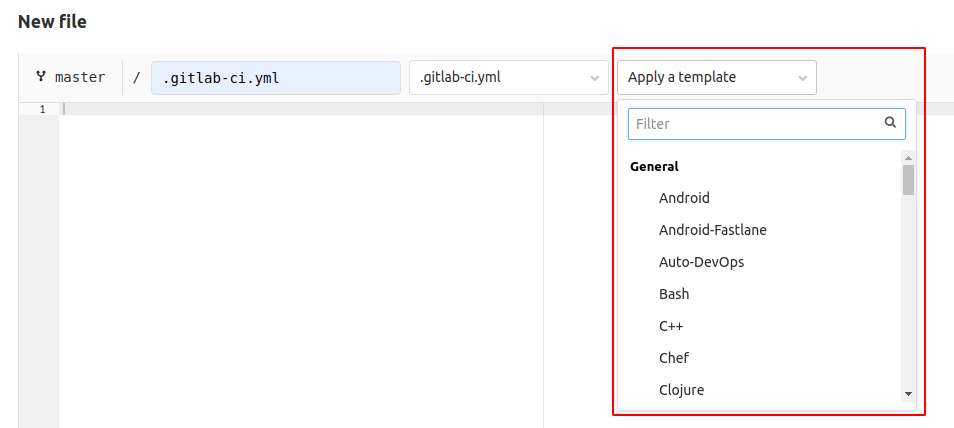5.2 KiB
Development guide for GitLab CI/CD templates
This document explains how to develop GitLab CI/CD templates.
Place the template file in a relevant directory
All template files reside in the lib/gitlab/ci/templates directory, and are categorized by the following sub-directories:
| Sub-directroy | Content | Selectable in UI |
|---|---|---|
/AWS/* |
Cloud Deployment (AWS) related jobs | No |
/Jobs/* |
Auto DevOps related jobs | Yes |
/Pages/* |
Static site generators for GitLab Pages (for example Jekyll) | Yes |
/Security/* |
Security related jobs | Yes |
/Verify/* |
Verify/testing related jobs | Yes |
/Worklows/* |
Common uses of the workflow: keyword |
No |
/* (root) |
General templates | Yes |
Criteria
The file must follow the .gitlab-ci.yml syntax.
Verify it's valid by pasting it into the CI lint tool at https://gitlab.com/gitlab-org/gitlab/-/ci/lint.
Also, all templates must be named with the *.gitlab-ci.yml suffix.
Backward compatibility
A template might be dynamically included with the include:template: keyword. If
you make a change to an existing template, you must make sure that it won't break
CI/CD in existing projects.
For example, changing a job name in a template could break pipelines in an existing project.
Let's say there is a template named Performance.gitlab-ci.yml with the following content:
performance:
image: registry.gitlab.com/gitlab-org/verify-tools/performance:v0.1.0
script: ./performance-test $TARGET_URL
and users include this template with passing an argument to the performance job.
This can be done by specifying the environment variable TARGET_URL in their .gitlab-ci.yml:
include:
template: Performance.gitlab-ci.yml
performance:
variables:
TARGET_URL: https://awesome-app.com
If the job name performance in the template is renamed to browser-performance,
user's .gitlab-ci.yml will immediately cause a lint error because there
are no such jobs named performance in the included template anymore. Therefore,
users have to fix their .gitlab-ci.yml that could annoy their workflow.
Please read versioning section for introducing breaking change safely.
Testing
Each CI/CD template must be tested in order to make sure that it's safe to be published.
Manual QA
It's always good practice to test the template in a minimal demo project. To do so, please follow the following steps:
- Create a public sample project on https://gitlab.com.
- Add a
.gitlab-ci.ymlto the project with the proposed template. - Run pipelines and make sure that everything runs properly, in all possible cases (merge request pipelines, schedules, and so on).
- Link to the project in the description of the merge request that is adding a new template.
This is useful information for reviewers to make sure the template is safe to be merged.
Make sure the new template can be selected in UI
Templates located under some directories are also selectable in the New file UI. When you add a template into one of those directories, make sure that it correctly appears in the dropdown:
Write an RSpec test
You should write an RSpec test to make sure that pipeline jobs will be generated correctly:
- Add a test file at
spec/lib/gitlab/ci/templates/<template-category>/<template-name>_spec.rb - Test that pipeline jobs are properly created via
Ci::CreatePipelineService.
Security
A template could contain malicious code. For example, a template that contains the export shell command in a job
might accidentally expose project secret variables in a job log.
If you're unsure if it's secure or not, you need to ask security experts for cross-validation.
Versioning
Versioning allows you to introduce a new template without modifying the existing one. This is useful process especially when we need to introduce a breaking change, but don't want to affect the existing projects that depends on the current template.
There is an open issue for introducing versioning concept in GitLab Ci Template. Please follow the issue for checking the progress.
